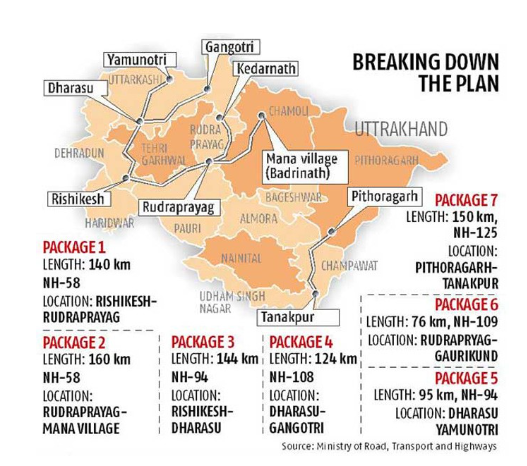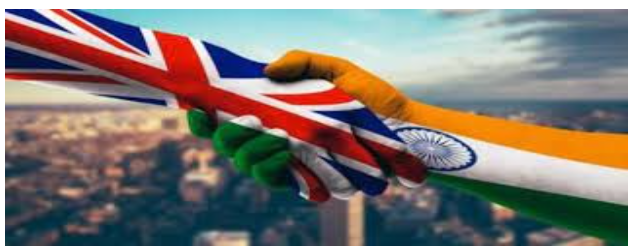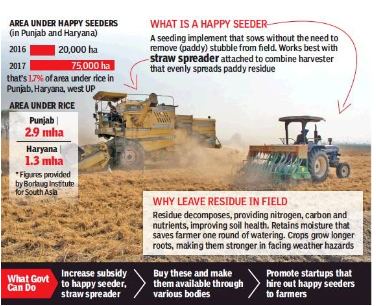Wednesday, 15th November 2023
India-US 2+2 Ministerial Dialogue
In News: The 5th Edition of the India-US 2+2 Ministerial Dialogue recently occurred, focusing on progress in bilateral cooperation areas such as defence, semiconductors, emerging technology, space, and health.
About 2+2 Meeting
- The 2+2 meetings involve two high-level representatives, each holding portfolios in Foreign and Defence ministries, from both countries.
- This framework aims to expand dialogue, allowing a deeper understanding of strategic concerns and sensitivities.
- This mechanism helps build a more robust and integrated strategic relationship amid a dynamically evolving global landscape.
- India's 2+2 Partners
- The United States stands as India's oldest and most crucial 2+2 talks partner.
- Furthermore, India has engaged in 2+2 meetings with ministers from Australia, Japan, the United Kingdom, and Russia.
About India’s 2+2 dialogue
- Défense Collaboration
- The two nations aimed to jointly develop and produce defence systems, strengthening their partnership in defence technologies.
- Ongoing negotiations include deals for MQ-9B unmanned aerial vehicles and the licensed manufacture of General Electric's F-414 jet engine in India, aligning with India's goal of enhancing its defence capabilities.
- The finalization of a Security of Supply Arrangement (SOSA), a key priority in the roadmap, is anticipated to enhance the defence industrial ecosystems and supply chain resilience.
- Infantry Combat Vehicles and Future Plans
- Discussions on infantry combat vehicles, particularly the Stryker, were part of the defence industry cooperation roadmap.
- Formal cooperation in infantry combat systems awaits the finalization of the Indian military's needs and a production plan through collaboration between Indian and U.S. industry and military teams.
- Advancements in defence Technology Cooperation
- Both sides assessed the progress of the India-U.S. defence Industrial Ecosystem, INDUS-X, launched in June 2023, focusing on expanding the strategic technology partnership and defence industrial cooperation.
- Membership in Combined Maritime Forces
- India's decision to become a full member of the Combined Maritime Forces, based in Bahrain, was welcomed, underscoring India's commitment to regional maritime security.
- Maritime Security
- Both nations emphasized their commitment to maritime security in the Indo-Pacific region, recognizing the importance of safeguarding vital sea lanes and promoting stability.
- Space and Semiconductor Collaboration
- Progress under the India-US Initiative on Critical and Emerging Technology (iCET) was welcomed, aiming to build science and technology collaborations in commercial and defence sectors, especially in emerging technologies like quantum, telecom, biotechnology, Artificial Intelligence, and semiconductors.
- The early meeting of the Strategic Trade Dialogue Monitoring Mechanism was also welcomed.
- Discussion on Chinese Aggression
- The U.S. highlighted that the bilateral relationship extends beyond addressing challenges posed by China.
- India-Canada Row
- The ongoing dispute between India and Canada, particularly regarding security concerns related to a Khalistan separatist based in the U.S. and Canada, was addressed.
- India communicated its position on core security concerns.
- Israel-Hamas War
- India reiterated its stance on the Israel-Hamas Conflict, advocating for a two-state solution and the early resumption of dialogue.
- Humanitarian assistance has been provided, emphasizing adherence to international humanitarian law and condemning civilian casualties.
Way Forward
- The collaboration between the two nations is crucial in upholding a free, open, and rule-based Indo-Pacific region.
- The extraordinary demographic dividend presents extensive opportunities for U.S. and Indian companies in technology transfer, manufacturing, trade, and investment.
- India is becoming a prominent player in a global system experiencing unprecedented transformation.
- Leveraging its current position, India intends to explore opportunities that advance its essential interests.
|
UPSC Previous Year Questions Mains (2019) Q. ‘What introduces friction into the ties between India and the United States is that Washington is still unable to find for India a position in its global strategy, which would satisfy India’s National self-esteem and ambitions’. Explain with suitable examples. (Q. ‘What introduces friction into the ties between India and the United States is that Washington is still unable to find for India a position in its global strategy, which would satisfy India’s National self-esteem and ambitions’. Explain with suitable examples. |
Source: PIB
OECD Report: Towards Eliminating Plastic Pollution by 2040
In News: The Organisation for Economic Co-operation and Development (OECD) issued an interim report which disclosed that 21 million tonnes of plastics entered the environment worldwide in 2022.
Key Highlights of the Report
- Considering the climate policies implemented as of 2021 (used as a reference), there is a projected 50% increase in the release of (macro)plastics into the environment by 2040.
- However, if prompt, rigorous, and globally coordinated policy measures are taken (incurring a cost equivalent to just 0.5% of global GDP), plastic waste generation in 2040 could be reduced by a quarter compared to the baseline.
- Adverse Outcomes of Persistent Plastic Utilization and Increasing Waste Levels includes:
- Environmental Consequences encompass the buildup of plastic in oceans, causing harm to marine life, and the disturbance of ecosystems due to plastic pollution.
- Climate Ramifications involve greenhouse gas emissions stemming from plastic production and the energy-intensive procedures involved in plastic recycling.
- Health Implications involve microplastics entering the food chain (resulting in bioaccumulation) and impacting human health, as well as respiratory issues arising from the incineration of plastic waste.
- Economic Repercussions include the expenses related to cleaning up plastic pollution and the decline in tourism revenue in areas affected by plastic debris.
Recommendations proposed in the report
- Control Production and Demand:
- Enforce targeted taxes and regulations on disposable plastics, as demonstrated by India's ban on Single-Use plastics in 2022.
- Constrain production and demand to sustainable levels by exploring alternatives to plastics, following India's LiFE approach.
- Foster Circular Design:
- Enhance the plastic production process through eco-design criteria. Establish product standards that encourage reuse.
- Improve Recycling:
- Bolster material loops by enhancing separate collection, sorting, and recycling of plastic waste.
- Implement measures such as extended producer responsibility.
- Seal Leakage Routes:
- Mitigate environmental losses by implementing effective waste collection and disposal methods.
About OECD
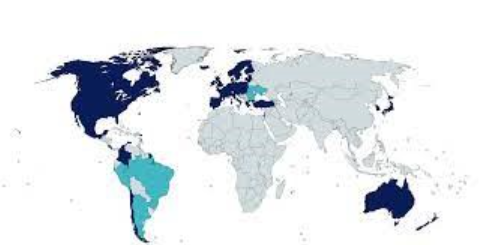
- The Organisation for Economic Co-operation and Development is an intergovernmental organization established in 1961 with 38 member countries.
- Its primary purpose is to promote economic progress and global trade.
- Functioning as a forum, its member nations are characterized by their commitment to democracy and market economies.
- The organization serves as a platform for comparing policy experiences, addressing common issues, identifying best practices, and coordinating both domestic and international policies among its members.
- Most OECD members are high-income economies categorized as "very high" in the Human Development Index, representing developed countries.
- Collectively, they have a population of 1.38 billion
- As of 2017, OECD member countries accounted for 62.2% of global nominal GDP (US$49.6 trillion) and 42.8% of global GDP (Int$54.2 trillion) at purchasing power parity.
- The OECD holds the status of an official United Nations observer.
|
UPSC Previous Year Questions Prelims (2021) Q. Bisphenol A (BPA), a cause of concern, is a structural/key component in the manufacture of which of the following kinds of plastics? (a) Low-density polyethylene (b) Polycarbonate (c) Polyethylene terephthalate (d) Polyvinyl chloride Answer: B Exp: BPA stands for bisphenol A, an industrial chemical that has been used to make certain plastics and resins since the 1950s. BPA is found in polycarbonate plastics and epoxy resins. Polycarbonate plastics are often used in containers that store food and beverages, such as water bottles. Prelims (2021) Q. Triclosan considered harmful when exposed to high levels for a long time, is most likely present in which of the following? (a) Food preservatives (b) Fruit-ripening substances (c) Reused plastic containers (d) Toiletries Answer: D Exp: Triclosan is an antibacterial and antifungal agent present in some consumer products, including toothpaste, soaps, detergents, toiletries toys, and surgical cleaning treatment. |
Source: DTE
Sovereign green bond - Edukemy Current Affairs
In News: The initial issuance of sovereign green bonds (SGrB) for the Financial Year 2024 saw a successful auction of five-year maturity bonds, drawing considerable investor interest.
About Sovereign green bond
- A sovereign green bond is a financial tool issued by a sovereign entity, inter-governmental group, alliance, or corporation.
- The funds raised from these bonds are specifically allocated to projects categorized as environmentally sustainable.
- In the context of India, sovereign green bonds exemplify the nation's dedication to constructing a low-carbon economy.
- They effectively reduce the capital cost associated with green projects by attracting new investors and mobilizing private capital for sustainable development initiatives.
- India's inaugural foray into the sovereign green bond market financed expenditures in various areas, including grid-scale solar and wind projects, as well as decentralized solar initiatives such as solar water pumps for agriculture.
- This demonstrates a strategic utilization of green bonds to promote environmentally friendly ventures in the country.
Source: Business Line
Code of Conduct for Judiciary - Edukemy Current Affairs
In News: The U.S. Supreme Court has issued its inaugural code of conduct, consisting of nine pages outlining ethics rules for its justices.
About Code of Conduct
A code of conduct is a set of guidelines that delineate the standards, rules, and responsibilities or appropriate practices for an individual, group, or organization. It may be either voluntary or mandatory.
Criticism of Code of Conduct
- The code lacks an enforcement mechanism, relying on justices to voluntarily comply with its "rules and principles." Rules alone are deemed incomplete without a mechanism for assurance.
- There have been recent appeals for the U.S. Congress to enact legislation that would establish enforceable ethical guidelines for the Supreme Court.
Ethical Concerns in the Indian Judiciary
- In 2022, the Madurai bench of the Madras High Court sentenced YouTuber Savukku Shankar to six months in prison.
- This decision followed his accusations against Justice GR Swaminathan, alleging influence in a case and making general claims of corruption within the higher judiciary.
- In 2018, a press conference was held by four of the senior-most judges of the Supreme Court, expressing dissent against the then Chief Justice of India (CJI).
- In 2020, former Chief Justice of India (CJI) Ranjan Gogoi was nominated to the Rajya Sabha. During his tenure, the bench headed by him delivered pivotal judgments in cases such as Ayodhya, Sabarimala, and Rafale.
Solutions
- Adherence to the Bangalore Principles of Judicial Conduct (2002) is essential, emphasizing the importance of maintaining independence from inappropriate influences, steering clear of conflicts of interest, and upholding the rule of law.
- The concern known as the "Uncle Judges Syndrome" is tackled by the Law Commission of India in its 230th Report.
- The commission recommends that individuals with family members practicing in a High Court should not be appointed as judges in the same High Court.
Source: BBC
GPS anklets - Edukemy Current Affairs
In News: Marking a precedent in India, Ghulam Mohammad Bhat, who is facing charges under the Unlawful Activities (Prevention) Act in Jammu and Kashmir, has been granted bail under the condition of wearing a Global Positioning System (GPS) tracking device.
About GPS tracker
- The GPS tracker, a compact wearable device, is securely attached around the ankle, offering instantaneous location updates.
- It is designed to be tamper-proof, triggering an alarm if any attempt is made to interfere with it.
- Additionally, it cannot be removed by the wearer or any unauthorized individual without causing damage.
- This tracker can be worn on either the ankle or arm, resulting in variations known as GPS anklets and GPS bracelets.
- While the use of GPS trackers as a condition for bail is standard practice in countries such as the United States, the United Kingdom, and Malaysia, this represents the inaugural occurrence of such a measure in India.
About GPS
- The Global Positioning System (GPS) is a satellite-based navigation system employing satellites, receivers, and algorithms to coordinate location, velocity, and time data.
- Originally developed by the U.S. military, GPS has evolved into a widely utilized technology for air, sea, and land travel.
- One of the key advantages of GPS is its operational capability in diverse weather conditions, offering continuous service worldwide 24 hours a day.
- Remarkably, GPS does not entail subscription fees or setup charges.
- Certain GPS receivers exhibit exceptional accuracy, enabling them to pinpoint their location with precision down to 1 centimetre.
- Originally conceived for military purposes, GPS has transcended its military origins to become an indispensable tool for various civilian applications, including navigation, mapping, surveying, and numerous location-based services.
Source: IE
EX-BONGOSAGAR - Edukemy Current Affairs
In News: The Indian Navy and Bangladesh Navy conducted the 4th edition of the Bilateral Exercise BONGOSAGAR-23 and the 5th edition of the Coordinated Patrol (CORPAT) in the Northern Bay of Bengal.
About EX-BONGOSAGAR
- Participating in the exercise were Indian Navy Ships Kuthar, Kiltan, and Maritime Patrol Aircraft Dornier, alongside Bangladesh Navy Ships Abu Bakr, Abu Ubaidah, and MPA.
- Notably, the CORPAT-23 incorporated inaugural Humanitarian Assistance and Disaster Relief (HADR) drills, specifically concentrating on a Search and Rescue scenario at sea.
Source: PIB
Zaglossus Attenboroughi - Edukemy Current Affairs
In News: After being missing for six decades, an elusive echidna identified as Zaglossus Attenborough, previously feared extinct, has been rediscovered in a remote area of Indonesia.
About Zaglossus Attenboroughi
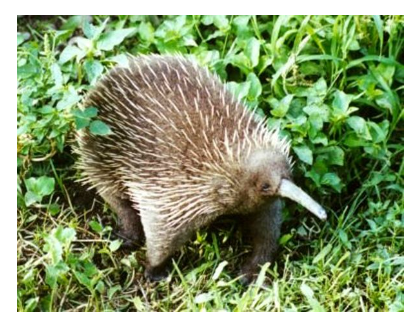
- The Zaglossus Attenborough, commonly known as Attenborough's long-beaked echidna, was last sighted in 1961.
- This species of long-beaked echidna, named in honour of renowned British naturalist David Attenborough, is particularly challenging to locate due to its nocturnal and elusive nature.
- It has exclusively been documented in the extremely remote Cyclops Mountains within Indonesia's Papua region.
- Also referred to as Sir David's long-beaked echidna or the Cyclops long-beaked echidna, this unique creature is one of three species belonging to the Zaglossus genus found on the island of New Guinea.
- Specifically, it resides in the Cyclops Mountains, near the cities of Sentani and Jayapura in the Indonesian province of Papua.
- Given its restricted habitat and elusive behaviour, the Attenborough long-beaked echidna is a critically endangered species, as classified by the International Union for Conservation of Nature (IUCN).
- The nomenclature reflects not only its distinctive features but also pays tribute to the naturalist Sir David Attenborough.
Source: TH
Traditional Seed Preservation Practices in North East
In News: The Ao and Sümi Naga communities in Nagaland adhere to practices handed down through generations, specifically Traditional Seed Preservation Practices. These involve safeguarding seeds from productive harvests to be used in subsequent cycles.
About Ao and Sümi Naga communities
Ao Naga community
- The Ao Naga tribe primarily inhabits Nagaland's Mokokchung district, spanning from Tsüla (Dikhu) Valley to Tsürang (Disai) Valley.
- Thought to have originated from Southeast Asian nations like Indonesia, Malaysia, and Myanmar, the Ao Nagas are part of the Naga tribes with roots in Mongoloid ancestry.
- Within the Ao tribe, the Mongsen and the Chongli are distinctive racial groups.
- The Aos were the pioneering Nagas to embrace Christianity and Western education.
Sümi Naga Community
- The Sümi Naga people represent another indigenous community in Nagaland, renowned for their unique cultural practices and robust agricultural heritage.
- They observe various festivals, including Tuluni, Ahuna, and Tsükhenye, often revolving around agricultural cycles and featuring traditional dances, songs, and feasts.
- Similar to several other Naga tribes, the Sümi Naga traditionally engaged in jhum or shifting cultivation, cultivating crops such as rice, millet, beans, lentils, pepper, and tobacco.
About Shifting cultivation
- Shifting cultivation, referred to locally as 'Jhum,' is a prevalent crop cultivation method among the indigenous communities of Northeast India.
- Also known as slash-and-burn agriculture, this practice involves farmers clearing land by cutting vegetation and burning forests and woodlands to create open areas for agriculture.
- This method offers a quick and straightforward way to prepare the land for cultivation.
- The burning of residual materials contributes essential nutrients to the soil, facilitating cultivation.
- Beyond providing sustenance, fodder, fuel, and livelihood, this practice is intricately tied to the identity of the families involved.
- However, due to the felling of forests and trees, shifting cultivation can lead to soil erosion and potentially impact the course of rivers.
Source: DTE
Smart Cities Mission - Edukemy Current Affairs
In News: The most recent data from the Ministry of Housing and Urban Affairs sheds light on the current status of India's Smart Cities Mission.
Key Highlights of the Data
- Leading the completion of projects, fund utilization, and overall criteria, Surat in Gujarat stands out as the top-performing city.
- Agra (Uttar Pradesh), Ahmedabad (Gujarat), Varanasi (Uttar Pradesh), and Bhopal (Madhya Pradesh) also secure positions in the top five cities, showcasing commendable progress
- The remaining top 10 includes Tumakuru (Karnataka), Udaipur (Rajasthan), Madurai (Tamil Nadu), Kota (Rajasthan), and Shivamogga (Karnataka).
- Addressing regional disparities, Union Territories (UTs) and cities in Northeastern states find themselves in the bottom 10.
- The cities at the bottom include Kavaratti (Lakshadweep), Puducherry, Port Blair (Andaman and Nicobar Islands), Imphal (Manipur), Shillong (Meghalaya), Diu, Guwahati (Assam), Aizawl (Mizoram), Gangtok (Sikkim), and Pasighat (Arunachal Pradesh).
- Sources attribute the slower progress in smaller cities to capacity constraints, emphasizing the need for tailored strategies to address the unique challenges faced by these urban centers.
- In terms of the overall project landscape, approximately 22% of total projects (1,745 out of 7,947) that constitute 33% of the total cost (Rs 1.70 lakh crore) are still ongoing. The completion of the majority of projects (6,202) underscores the scale and financial investment involved.
Source: IE
Arrow-3 Missile Defence System
In News: Israel confirmed using its advanced Arrow 3 missile interceptor against Iran-backed Houthi rebels.
About Arrow-3 Missile Defence System

- The Arrow 3, also known as Hetz 3, stands as an Ex atmospheric hypersonic anti-ballistic missile jointly funded, developed, and produced by the collaborative efforts of Israel and the United States.
- Spearheaded by Israel Aerospace Industries and Boeing, this missile is under the oversight of the Israeli Ministry of Defence’s "Homa" administration and the U.S. Missile defence Agency.
- The Arrow 3 is a crucial component of anti-ballistic missile defence, specifically designed to intercept long-range missiles.
- A joint venture between Israel Aerospace Industries (IAI) and Boeing, with collaboration from the U.S. Missile defence Agency.
- Engineered to intercept threats at high altitudes and extended ranges compared to its predecessor, Arrow 2.
- Possesses the capability to intercept incoming missiles outside Earth's atmosphere
- Relies on kinetic energy to neutralize incoming threats, eliminating the need for explosive warheads.
- Capable of intercepting threats at distances exceeding 1,500 kilometres.
- Able to engage targets at altitudes surpassing Earth's atmosphere, typically above 100 km.
- Travel speeds estimated at Mach 9 or greater (9 times the speed of sound).
- Equipped with advanced sensors and tracking systems for precise target acquisition and interception.
- Can engage multiple incoming threats simultaneously.
- Deemed highly effective against various ballistic missiles, including intermediate-range and intercontinental ballistic missiles (ICBMs).
Source: TOI
Net Neutrality - Edukemy Current Affairs
In News: In response to the government's request, the Telecom Regulatory Authority of India (TRAI) has launched a consultation process to discuss the regulation of Over-The-Top (OTT) services.
About Net Neutrality
- 'Net Neutrality' is the principle advocating for the impartial treatment of internet traffic by intermediate networks, without discrimination based on any criteria.
- This means that the network should remain neutral to all information transmitted through it.
- In the context of net neutrality, all communication passing through a network should be treated equally, regardless of its content, application, service, device, sender, or recipient address.
- This ensures that everyone, regardless of their financial resources or the size and influence of the websites they use, has equal access to information and services on the internet.
- The term "net neutrality" gained prominence through Tim Wu, a professor at Columbia Law School, who popularized it in his 2003 paper titled "Network Neutrality, Broadband Discrimination."
- Stakeholders affected by net neutrality in the internet domain encompass:
- Consumers of any internet service
- Telecom Service Providers (TSPs) or Internet Service Providers (ISPs)
- Over-the-top (OTT) service providers, encompassing those offering internet access services such as websites and applications
- The government, which may oversee and establish the relationships between these entities
- Additionally, TRAI functions as an autonomous regulator in the telecom sector, primarily overseeing Telecom Service Providers (TSPs) and their licensing conditions, among other responsibilities.
Importance of Net Neutrality
- Ensures an Open Internet: Net neutrality guarantees unrestricted access to information, ideas, and services, promoting a free flow of content.
- Prevents Discrimination by ISPs: In the absence of net neutrality, individual Internet Service Providers (ISPs) could prioritize certain websites with higher connection speeds while throttling access to others. In extreme cases, an ISP might even block access to specific content.
- Empowers Consumer Choice: Net neutrality grants consumers the freedom to choose the content, applications, and services they wish to access without limitations. It liberates them from being confined to a predetermined set of offerings dictated by ISPs.
- Preserves Freedom of Expression: By preventing interference, net neutrality safeguards the freedom of expression, allowing individuals to organize, communicate, and mobilize supporters unhindered. It stands as a crucial tool for democratic engagement.
- Encourages Innovation: An open internet creates an environment conducive to innovation and competition. Startups, small businesses, and entrepreneurs enjoy equal opportunities to launch new services and connect with users, eliminating the necessity to negotiate deals with ISPs.
- Curbs Anti-Competitive Practices: Net neutrality rules act as a safeguard against potential anti-competitive behaviour by ISPs, such as favouring their own content or services or those of their partners. These rules prevent discriminatory practices, maintaining a level playing field for fair competition.
Key concerns regarding Net Neutrality in India
- Telecom Companies' Perspective
- Over the past decade, telecom firms have experienced decreasing revenue, attributed mainly to the rise of free competing Over-The-Top (OTT) services.
- Telecom Service Providers (TSPs) emphasize substantial investments in network infrastructure, seeking incentives like differential pricing to sustain and expand internet penetration.
- Telecom companies argue that OTT services face an uneven taxation and licensing fee landscape, creating an imbalanced competitive environment.
- OTT Platforms' Perspective
- OTT providers stress that telecom companies are conduits for internet access, and consumers already pay for this access through data plans.
- OTT platforms advocate for net neutrality to prevent discrimination by TSPs, ensuring equal access, fostering innovation, and supporting a democratic exchange of ideas.
- OTT platforms cover CDN expenses, competing based on content variety, quality, streaming, navigation ease, and device availability.
- Telecom companies can adjust prices to cover costs, capitalizing on demand created by OTT content and infrastructure investments.
- Concerns for Consumers
- Net neutrality supporters argue against imposing extra costs on OTT platforms, expressing concerns that such expenses may be transferred to subscribers, leading to higher fees or reduced service quality.
- Critics of net neutrality assert the importance of maintaining open competition in internet services to safeguard consumers' access and choice.
Way Forward
- Regulation Clarity
- TRAI should provide clear guidelines on net neutrality, preventing discrimination while allowing reasonable network management.
- Multi-Stakeholder Approach
- Seek a balanced approach considering the interests of both telecom companies and OTT service providers.
- Foster fair competition, innovation, and enable telecom companies to recover investments.
- Transparency
- Encourage transparency in ISPs' network management and collaboration with OTT providers.
- Continual Assessment
- Regularly evaluate net neutrality regulations, adapting to the evolving nature of the internet.
- Public Awareness
- Increase public awareness about net neutrality principles and their impact on consumers
Source: TH
Share the article
Edukemy’s Current Affairs Quiz is published with multiple choice questions for UPSC exams
MCQ
Get Latest Updates on Offers, Event dates, and free Mentorship sessions.

Get in touch with our Expert Academic Counsellors 👋
FAQs
UPSC Daily Current Affairs focuses on learning current events on a daily basis. An aspirant needs to study regular and updated information about current events, news, and relevant topics that are important for UPSC aspirants. It covers national and international affairs, government policies, socio-economic issues, science and technology advancements, and more.
UPSC Daily Current Affairs provides aspirants with a concise and comprehensive overview of the latest happenings and developments across various fields. It helps aspirants stay updated with current affairs and provides them with valuable insights and analysis, which are essential for answering questions in the UPSC examinations. It enhances their knowledge, analytical skills, and ability to connect current affairs with the UPSC syllabus.
UPSC Daily Current Affairs covers a wide range of topics, including politics, economics, science and technology, environment, social issues, governance, international relations, and more. It offers news summaries, in-depth analyses, editorials, opinion pieces, and relevant study materials. It also provides practice questions and quizzes to help aspirants test their understanding of current affairs.
Edukemy's UPSC Daily Current Affairs can be accessed through:
- UPSC Daily Current Affairs can be accessed through Current Affairs tab at the top of the Main Page of Edukemy.
- Edukemy Mobile app: The Daily Current Affairs can also be access through Edukemy Mobile App.
- Social media: Follow Edukemy’s official social media accounts or pages that provide UPSC Daily Current Affairs updates, including Facebook, Twitter, or Telegram channels.

